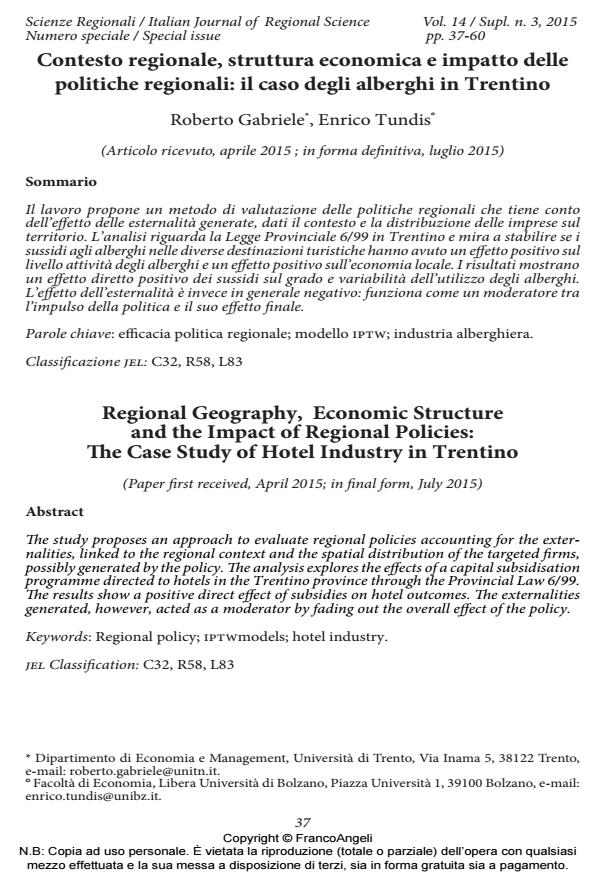Contesto regionale, struttura economica e impatto delle politiche regionali: il caso degli alberghi in Trentino
Titolo Rivista SCIENZE REGIONALI
Autori/Curatori Roberto Gabriele, Enrico Tundis
Anno di pubblicazione 2015 Fascicolo 2015/3 Suppl.
Lingua Italiano Numero pagine 23 P. 37-59 Dimensione file 437 KB
DOI 10.3280/SCRE2015-S03003
Il DOI è il codice a barre della proprietà intellettuale: per saperne di più
clicca qui
Qui sotto puoi vedere in anteprima la prima pagina di questo articolo.
Se questo articolo ti interessa, lo puoi acquistare (e scaricare in formato pdf) seguendo le facili indicazioni per acquistare il download credit. Acquista Download Credits per scaricare questo Articolo in formato PDF

FrancoAngeli è membro della Publishers International Linking Association, Inc (PILA)associazione indipendente e non profit per facilitare (attraverso i servizi tecnologici implementati da CrossRef.org) l’accesso degli studiosi ai contenuti digitali nelle pubblicazioni professionali e scientifiche
Il lavoro propone un metodo di valutazione delle politiche regionali che tiene conto dell’effetto delle esternalita generate, dati il contesto e la distribuzione delle imprese sul territorio. L’analisi riguarda la Legge Provinciale 6/99 in Trentino e mira a stabilire se i sussidi agli alberghi nelle diverse destinazioni turistiche hanno avuto un effetto positivo sul livello attivita degli alberghi e un effetto positivo sull’economia locale. I risultati mostrano un effetto diretto positivo dei sussidi sul grado e variabilita dell’utilizzo degli alberghi. L’effetto dell’esternalita e invece in generale negativo: funziona come un moderatore tra l’impulso della politica e il suo effetto finale.
Parole chiave:Efficacia politica regionale; modello iptw; industria alberghiera.
Jel codes:C32, R58, L83
- Seasonal work in the Italian tourism industry: a systematic literature review Fabio Gaspani, Silvia Mazzaglia, in Cambio. Rivista sulle Trasformazioni Sociali /2025 pp.17
DOI: 10.36253/cambio-16641
Roberto Gabriele, Enrico Tundis, Contesto regionale, struttura economica e impatto delle politiche regionali: il caso degli alberghi in Trentino in "SCIENZE REGIONALI " 3 Suppl./2015, pp 37-59, DOI: 10.3280/SCRE2015-S03003